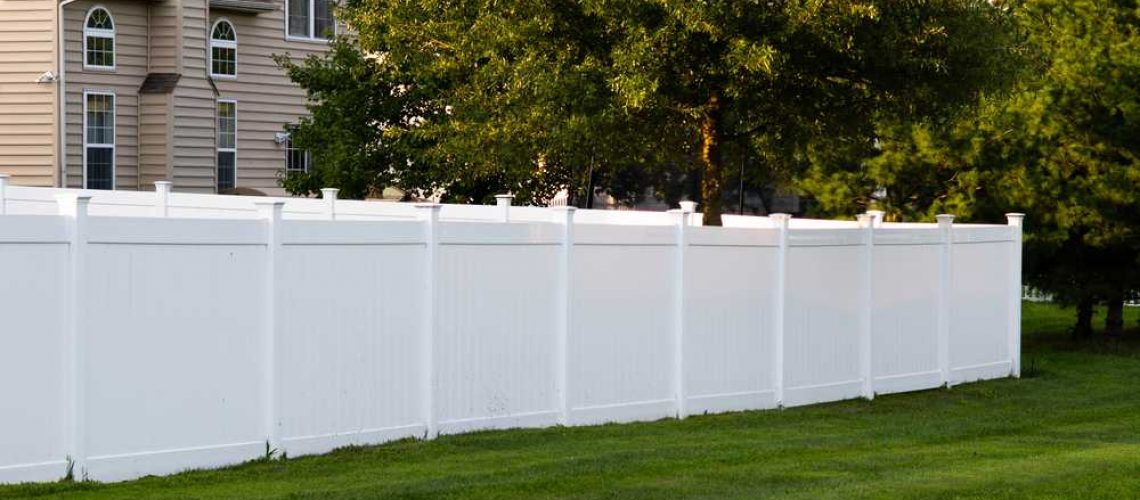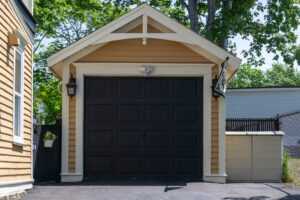Proper planning is the key to a successful fence installation. Whether you’re looking for privacy, security or simply to enhance your home’s aesthetics, a well-thought-out fence can make a significant difference. Our team at Freeman Exteriors in Champaign, IL, is here to guide you through the essential considerations to ensure your fence project goes off without a hitch.
Purpose and Function of the Fence
Determine Your Needs
Before you start digging post holes for your fence installation, it’s crucial to identify the primary reasons you’re installing a fence. Are you seeking more privacy from neighbors, a secure area for your pets or children, or merely an aesthetic enhancement for your property? Each purpose may require a different type of fence, so knowing your needs will help narrow down your options.
Privacy vs. Security vs. Aesthetics
Privacy fences are typically taller and made from solid materials like wood or vinyl to block the view from the outside. Security fences might include additional features like locks and alarms. If aesthetics are your main concern, consider ornamental designs that complement your home’s architecture. Each type serves its specific function and comes with its own set of advantages and drawbacks.
Specific Functions
If your fence’s primary purpose is to contain pets or ensure child safety, you’ll need to consider additional elements like height, material strength, and gate latches. Ensure the fence is sturdy enough to withstand playful pets or curious children while also providing easy access for adults.
Design Goals
Your fence should not only serve its intended function but also enhance the overall look of your property. Spend some time thinking about how the fence will complement your home’s design and landscape. Do you want a rustic wooden fence, a modern metal one, or perhaps a classic white picket fence?
Choosing a Style
There are numerous fence styles to choose from, each offering different benefits. Picket fences add a charming look but offer less privacy, while privacy fences completely block the view from outside. Chain-link fences are cost-effective and durable but may not win any beauty contests. Choose a style that aligns with both your needs and aesthetic preferences.
Local Regulations and Permits
Check Local Building Codes
Before you begin your fence installation, it’s essential to check local building codes and zoning regulations. Different areas have various rules regarding fence height, materials, and even color. Failing to comply can result in fines or having to remove the fence altogether.
Obtaining Necessary Permits
In many cases, you’ll need a permit to install a fence. Contact your local municipality to find out the requirements and how to apply. The permitting process can take time, so plan accordingly to avoid delays in your project.
HOA Guidelines
If you reside in a neighborhood overseen by a Homeowners Association (HOA), it’s important to familiarize yourself with their guidelines. HOAs often have strict rules about fence appearance, height, and placement to maintain community standards. Ensure your plans comply to avoid future disputes.
Choosing the Right Materials
Material Options
The material you choose for your fence will significantly impact its durability, maintenance requirements, and overall cost. Common materials include wood, vinyl, metal, and composite. Each has its pros and cons, so consider your specific needs and budget when making your choice.
Durability and Maintenance
Wood fences provide a timeless aesthetic, yet they demand consistent staining or painting for upkeeping their allure and warding off decay. Vinyl fences are low-maintenance and durable but can be more expensive. Metal fences, like wrought iron or aluminum, are robust and offer a high level of security but may require occasional rust treatment.

Cost Considerations
Your budget will play a significant role in the type of material you choose. Wood is generally the least expensive but requires more upkeep. Vinyl and metal are more costly upfront but offer lower maintenance over time. Consider long-term costs when setting your budget.
Material Aesthetics
Your fence should complement your home’s style and the surrounding landscape. A sleek, modern home may look best with a metal or vinyl fence, while a rustic, country home might be better suited to a wooden fence. Composite materials offer a variety of looks that can mimic wood but with less maintenance.
Budgeting and Costs
Estimate Total Costs
When budgeting for your fence installation, consider all potential expenses. These include the cost of materials, labor, permits, and any additional landscaping that might be necessary. Prices may fluctuate significantly depending on the fence type, height, and required length.
Factors Affecting Pricing
Several factors can influence the total cost of your fence project. A taller or longer fence will require more materials and labor, increasing the price. The complexity of the installation area, such as slopes or rocky soil, can also add to the cost.
Budget Planning
Set a realistic budget for your project and plan for unexpected expenses. It’s always a good idea to allocate extra funds for potential complications, such as discovering underground utilities or needing additional materials. Explore methods to reduce expenses without sacrificing quality, such as selecting more affordable materials or taking on certain tasks independently.
Fence Design and Layout
Design Options
There are numerous fence styles to choose from, each offering different benefits. Picket fences add a charming look but offer less privacy, while privacy fences completely block the view from outside. Chain-link fences are cost-effective and durable but may not win any beauty contests. Choose a style that aligns with both your needs and aesthetic preferences.
Customization Options
Consider adding elements like gates, decorative post caps, or lattice tops to customize your fence. These attributes have the potential to elevate both the aesthetics and utility of your fence, rendering it distinctly your own. Customization can also address specific needs, like adding a lockable gate for security.
Layout Considerations
Proper planning of your fence layout is crucial for a successful installation. Determine and outline the designated area for the fence, taking into account strategic gate placements to ensure convenient access. Ensure the layout is accurate to avoid any issues during installation.
Site Preparation
Clearing the Area
Before installation begins, clear the area of any obstacles like trees, rocks, or old fencing. A clear and level space is essential for a smooth installation process. Removing these obstacles beforehand will save time and prevent complications.
Utility Checks
It’s important to locate any underground utilities before you start digging. Contact local utility companies to perform necessary checks and mark the location of gas lines, water pipes, and electrical cables. This step is vital during the fence installation process as it helps to prevent potential hazards and guarantee a safe installation.
Contact Our Team Today for Your Fence Installation
. By understanding your needs, checking local regulations, choosing the right materials, and budgeting appropriately, you can ensure a successful fence installation that meets your goals and enhances your property.
Keep in mind, a meticulously kept fence not only enhances the value and aesthetics of your home but also ensures privacy and security. Take the time to plan and execute your fence project correctly, and you’ll enjoy the benefits for years to come.
If you’re ready to start your fence installation project, contact our team at Freeman Exteriors in Champaign, IL, by calling (217) 442-2281 to schedule a free estimate.




